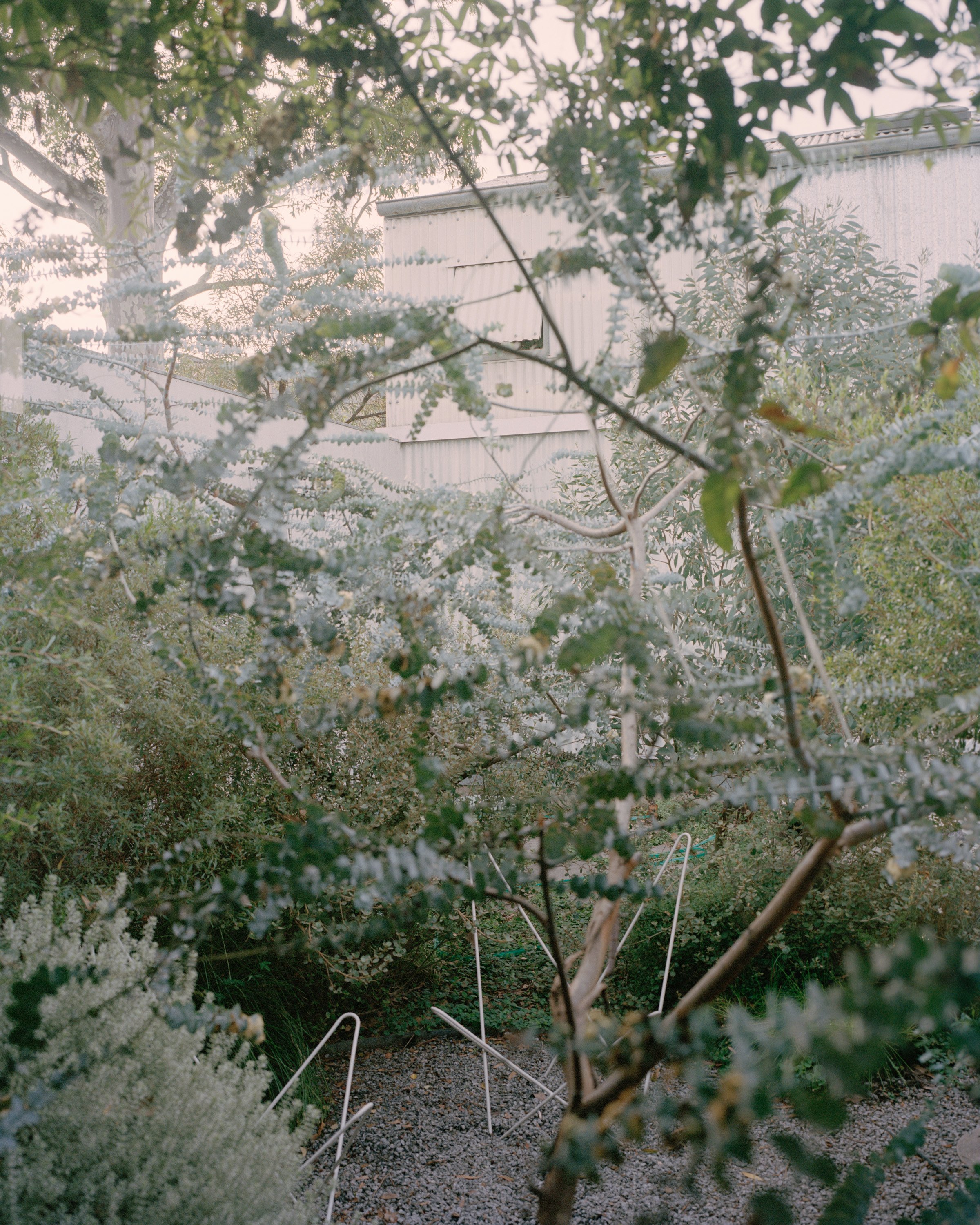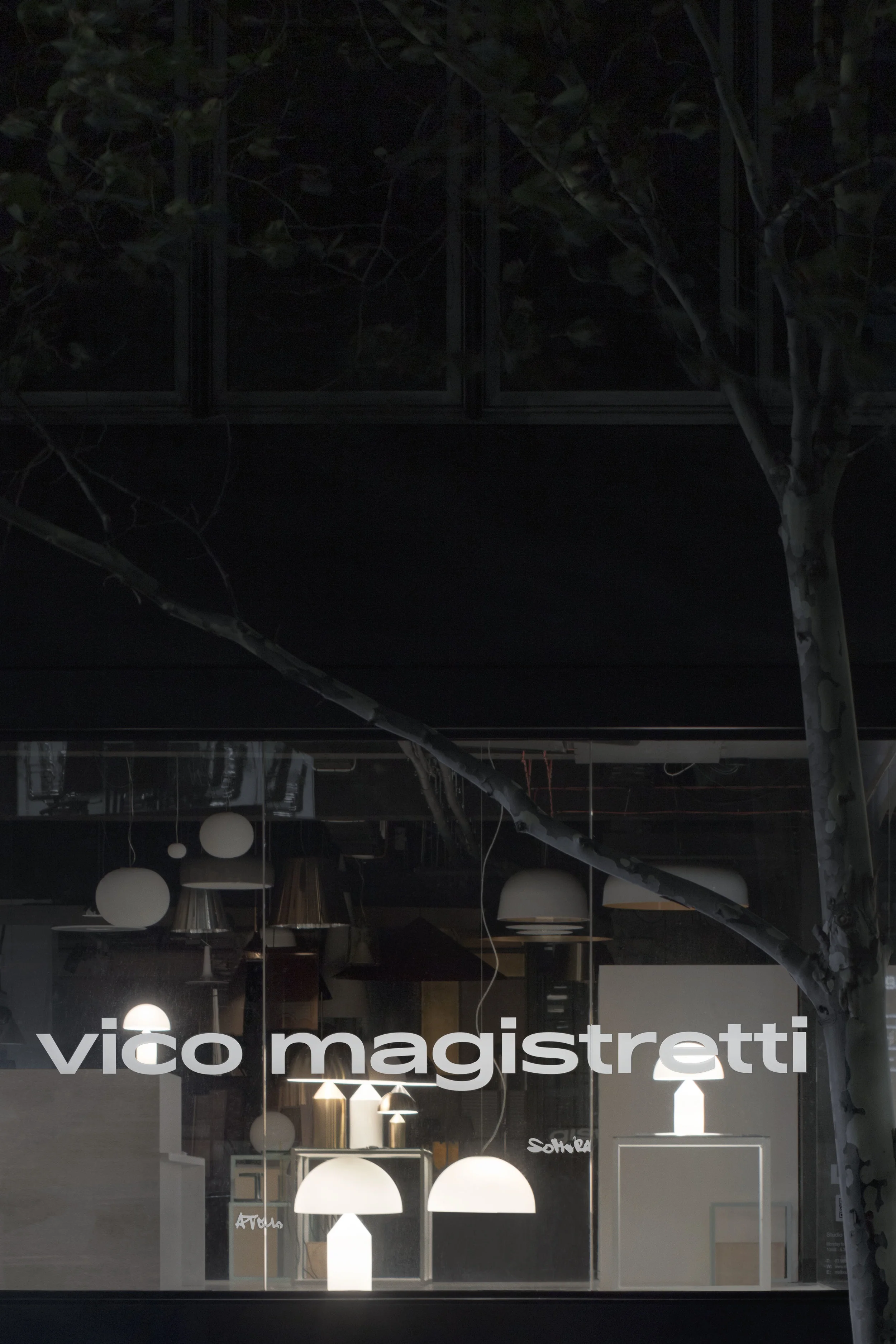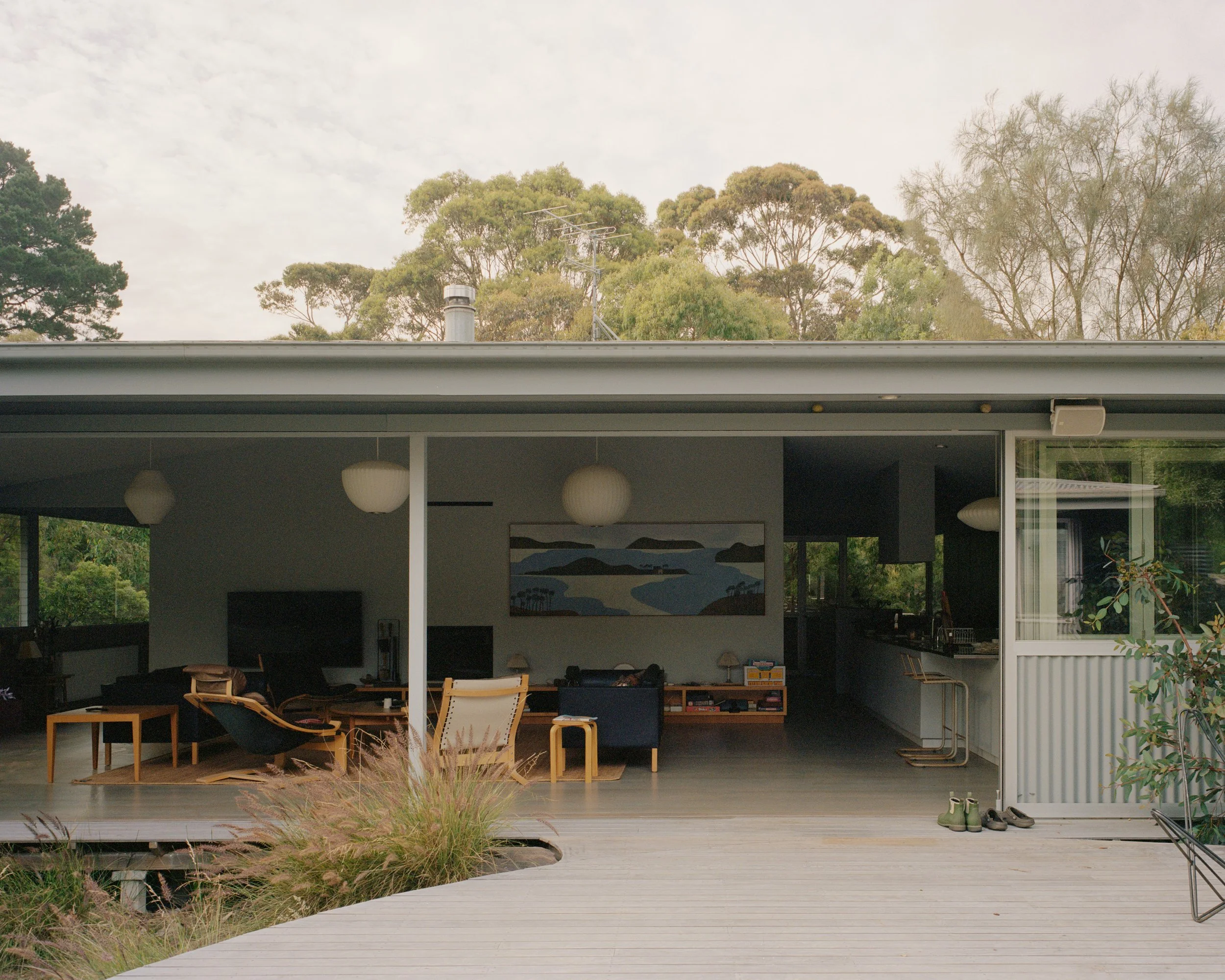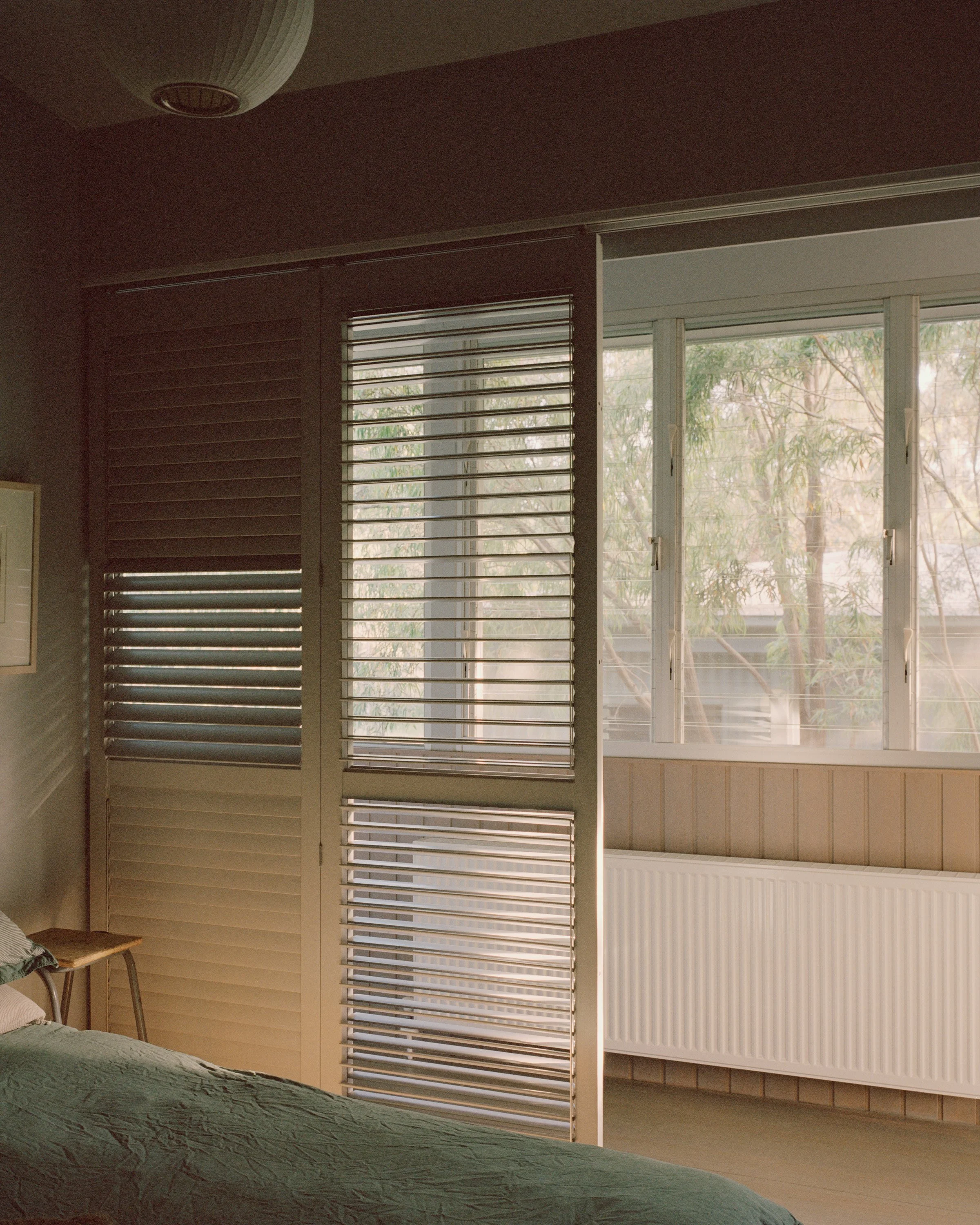Vico Magistretti – Travelling Archive
The lesson of conceptual simplicity
Introduction from the Archive folio, by Mauro Baracco
The idea for this exhibition and its design is simple and straightforward: to group and collect the exhibition content – photos, images, sketches, texts and other material put together by the Magistretti Foundation as an ‘archive’ of Magistretti’s practice[i] – into a large folio that visitors can peruse while at the same time inhabiting a room à la Magistretti, experiencing chairs, lights and a table designed by this Milanese architect. Following yet differently from previous shows in other parts of the world where the archive material was primarily pinned up on walls,[ii] this travelling exhibition, hosted in Melbourne as part of the Melbourne Design Week (14-24 March 2019), echoes typical practices that normally take place through the consultation of archive documentation, involving careful handling of the material included in the archive collection.
It is indeed a simple, ‘obvious’, idea – in a way reflecting the sense of immediateness and essentiality that inform the design approach of Vico Magistretti, constantly inclined to the realization of products as outcomes of clear and communicable concepts.
Magistretti has been described as an author of “exemplary projects that don’t need to raise their voices or show their muscles. They are deeply innovative essentially because they are, above all, backed up by concepts, the fruit of intuition and ideas that Magistretti himself, through his proverbial understatement, describes as elementary and obvious”.[iii]
Differently from some other Italian architects – who are obsessively drawn by the detailing – often over detailing – in their design, Magistretti’s approach is fresh and immediate, to the point that some of his works – Chimera lamp among others comes to mind – was ‘designed’ through discussions over the phone with the maker.[iv]
This is indicative of an approach that is intellectual rather than ‘architecturally heroic’, an approach that believes indeed in the strength of – and collaborative discussions about – ideas rather than in complex and convoluted design (over) performances. An approach that is at the same time confident and humble, firm and gentle, capable to stay open to and embrace the maker’s expertise for the realisation of the final product. An anti-heroic approach, capable to freshly operate in negotiating modes, relying on the maker’s know-how.
We don’t have indulgently beautiful sketches with Magistretti, but rather clever and witty ideas, in the trajectory of that Italian design tradition of conceptual simplicity which is praised by this Milanese architect: “I loathe style; I couldn’t care less about it…instead the only thing that interests me is concept design. I believe that among the characteristics of Italian design, the thing that struck me most is its conceptual simplicity”.[v]
It is through this approach that Magistretti constantly works with all his industry clients, believing that the relevance – and only possible nature – of product/furniture design is based on its capacity to be generated – to come to life – through a close relationship between the designer and the manufacturing company. The success of Magistretti and his peers – architects and designers of an Italian generation that has never been literally aligned to modernism[vi] – is heavily based on lively and fruitful discussions with brilliant manufacturers, whose visions and yet full awareness of the potentiality inherent in the envisaged design proposals (also and above all in financial and market terms) are an essential condition for high standard results.
It is also in the name of the designer/producer circularity so relevant to Magistretti that the curatorial framework of this exhibition in Melbourne has deliberately promoted a dialogue with Australian industry partners whose collaboration, in addition to that of the other institutional partners, has invaluably contributed to the installation fit-out and related collateral events, throughout and after the Melbourne Design Week.[vii]
Magistretti’s direct relationships with collaborating clients and manufacturing companies has been extended to builders and developers through a practice also consistently involved with architectural design – a field that Magistretti considers different, even opposite, and yet related to furniture/product design.[viii] In parallel to this, he was also a generous educator for younger generations, mainly at the Royal College of Design in London where he taught for twenty years – Jasper Morrison’s and Konstantin Grcic’s inclination to simplicity and essentiality are undoubtedly indebted to their Milanese teacher and mentor.
If we think of Magistretti’s propension to conceptual simplicity, to essential and geometrical forms rather than mannerist stylistic exercises, it doesn’t surprise he was a key figure within that Italian design tradition so often inclined to look at and reinterpret anonymous objects. As we know, anonymous objects are primarily the result of functional rather than stylistic reasons, although not necessarily informed or trapped by functionalist ideologies.
Moreover – we are here proposing a further reading on the attraction to anonymous objects – perhaps the fascination with non-designed things from the everyday world may come more natural to Italians, who since the remote time of the Roman Empire, have never been concerned with imperialist inclinations. In modern/post-medieval times Italy has never been a dominant nation, but rather a country of many different regions constantly invaded and dominated by others. This must have certainly triggered a deep sense of care, of cherishing love, for the many regional, provincial, local cultures – and associated things – in need of shelter, even preservation, under the ‘universalist’ agendas of the various colonizers (being these French, Austrian, Spanish, Swedish or others). This must have promoted an idiosyncratic way to look with careful attention at everyday objects ingrained in local cultures and contexts.
Magistretti’s lesson to current practices – the enduring validity of his work – is based on an approach to which looking at the contribution from anonymous objects and designing through open collaboration are two attitudes indicative of the deep trust placed by this architect on the power of the idea. Furthermore, his swift and witty ideas tend to produce essential objects, capable of ‘lightly’ and agilely being part of our lives, opposite of the many, too many and unnecessary, redundant things that clutter the world.
Magistretti’s relevant currency is also and above all reflected in his continuous call for simplicity as a fundamental quality for our world.[ix] As a precursor, well ahead of the many pleas that today invite to work towards the creation of sustainable environments, his approach is not surprisingly in empathy with practices currently inclined to urban and social ecologies informed by levels of ‘lightness’. Among others, the call, by contemporary philosopher Leonardo Caffo, for a world that needs to be increasingly released from our weight well echoes Magistretti’s fascination for simplicity and lightness:
“If we really want to embrace sustainability as a concrete tenet of daily life and design, we must force ourselves to abandon rhetoric and symbolism and rapidly put into place effective solutions…(shifting) architecture away from the symbolic dimension (which we perhaps could afford to embrace back in the 1960s when there was Superstudio and radical architecture) and head(ing) toward the concrete dimension of effective change in our relation with the nonhuman environment, with ecosystems…I am imagining the design of lifting the weight of humans on the world, a design that is sustainable because it decreases the load toward we need to carry, instead of strengthening the structure that must carry this weight”.[x]
[i] The Magistretti Foundation is located in the office space in Via Conservatorio in Milan where Magistretti has practised through all his life. The Foundation is further and more extensively discussed in the text by Rosanna Pavoni in this folio.
[ii] Previous shows of this exhibition took place at the following locations: Italian Institute of Culture, Paris, France, 2014; Italian Institute of Culture, Los Angeles, USA, 2014; Italian Institute of Culture, San Francisco, USA, 2014; Idesign, Palermo, Italy, 2015.
[iii] Beppe Finessi, Vico Magistretti, Edizioni Corraini, Mantova, 2003.
[iv] “…I designed a lamp over the telephone…it’s called Chimera, and I explained it to the maker by telephone. I told him, ‘Look, make three circles, one, two and three, using this material, which is very easy to bend. Stand it up vertically and cut it at the top by 45 degrees. And then bring it here for me to see’. The model arrived ten days later”. Hans Ulrich Obrist, ‘Interview with Vico Magistretti’, Domus, no. 866, January 2004.
[v] Ibidem.
[vi] Achille Castiglioni, Marco Zanuso, Gio Ponti, Franco Albini, Ignazio Gardella, Luigi Caccia Dominioni, Enzo Mari and Ettore Sottsass just to name a few among others.
[vii] This exhibition, a partnership between the Italian Institute of Culture in Melbourne, the School of Architecture and Urban Design of RMIT University and the Magistretti Foundation in Milan, with the collaboration of industry partners – Euroluce Australia, Artemide Australia, Boffi Studio – and the support of RMIT Design Archives, RMIT Design Hub Gallery, and Lockrey Shewan Collection, is part of Melbourne Design Week 2019, an initiative by Creative Victoria in partnership with NGV. From 14th to 24th March it is shown at RMIT Design Archives, Design Hub, RMIT University; following this, from 28th March to 18th April, it is shown at the Italian Institute of Culture, Domain Road, South Yarra, Melbourne.
[viii] In Magistretti words: “I have always been concerned with architecture, and I still am, though at the moment most of my time is devoted to industrial design…Architecture and (industrial) design are two very different things. Like mountains and the sea. Two opposite but important aspects of the same panorama”. Hans Ulrich Obrist, op. cit.
[ix] From an interview with Hans Ulrich Obrist: “HUB: What does a design object need to make it last? VM: Most of all, the most complicated thing in the world: simplicity”. Ibidem.
[x] Leonardo Caffo, ‘Ecology: the end of rhetoric + an invitation to reality’, Domus/EcoWorld – Design for a healthy planet, supplement to Domus, no. 1027, September 2018.
Photographs Ben Hosking

























































































































































































































